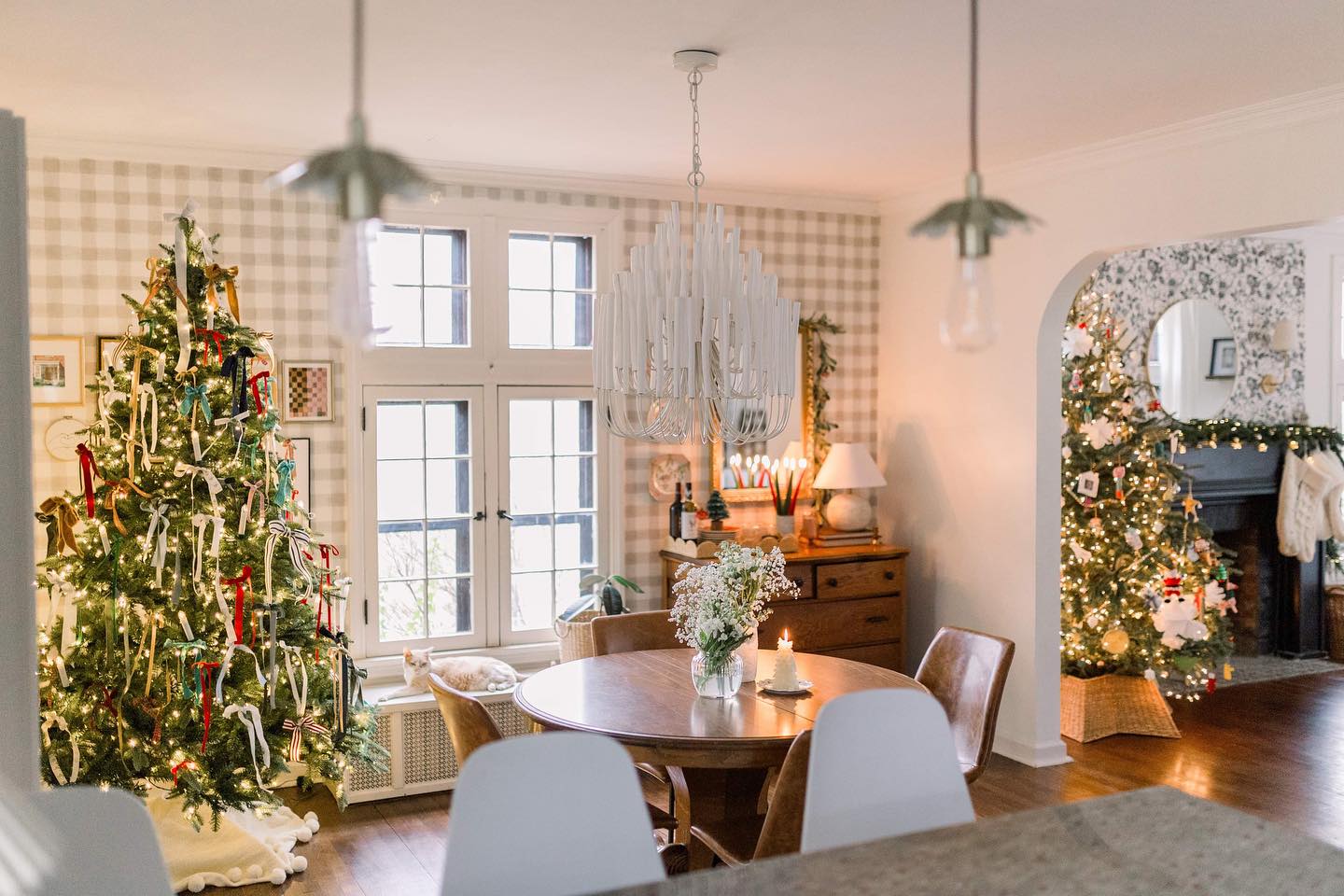If a home is the center of your family, your comfort and your world, then shouldn't it be round?
Gregg Fior thinks so.
You won't find the Amherst-based builder boxed into the usual suburban fare. "I wasn't going to build the average home," says Fior, president of H. Fior Inc. Design/Build Services, of his Deltec model, which looks like two perfect circles ? short silos, even ? connected by a hallway. "We've never been average people."
By average, Fior is referring to those franchise homes popping up in suburbia faster than dandelions. "I was not going to build a house I wouldn't live in myself," Fior remarks.
Fior realizes round homes reach a limited market: individualists who, quite literally, think outside the box. And they want to live outside of one, too.
"The look is important," he adds, noting the appeal of Deltec homes is no different than any human attraction. "Either you like it or you don't."
Indeed, round is a mindset, and those who love it are fanatics, Fior says. Once inside, you can see why.
A circular home wakes up your senses ? you are the audience in nature's theater-in-the-round. Windows expose a 360-degree view of the outside world, be it woods, water, mountains or even a meticulously landscaped property. (You don't need beach scenery to experience the open-air enjoyment that vaulted ceilings and a peripheral view of the outdoors provide.)
Stand dead center in a Deltec structure and look up. Ceiling trusses meet in the middle, and a peaceful feeling inexplicably sneaks up on you. Your world - your home - actually feels more permanent; it feels intentional and just as much a part of the scenery as any tree. The design allows you to participate in your surroundings while protecting you.
This is exactly what drew Craig Hampton to the design. He noticed another round home in Lorain and approached Fior about constructing one on his lakefront property. "My wife and I were in a home where you really didn't know you were on lake property until you walked outside," he says. "Now, it's like being in the bow of a ship. The house is made for a view."
A few neighbors questioned Hampton's choice. And since their property is next to a church, parishioners were curious, too. "Some people think that space is wasted [because of the shape]," Hampton says, "but I don't think that's true."
Hampton and his wife designed the interior space, laying the floor and deciding how to divide the 1,200-square-foot, round plan into two bedrooms, two bathrooms, a kitchen and a great room. "The room [dividing] took a little trial and error," he admits. "We drew lines on the plywood floor three or four different times with chalk before we put the walls up. But because the weight of the home is borne on the outside walls, what we did on the inside wasn't structural at all."
The round shape required extra thought at first, but it didn't present problems with interior design or finishing. Besides, he says the feeling of living in a space makes life more interesting. "It seems like the house is always wrapping around you," he says.
But not everyone wants to live in circles. And Fior admits that even he and his wife took some time getting used to the different environment. "When you're older it's harder to adapt," he says. "People are so used to the box thing."
For the Fiors, the move was a logical way to downsize. With grown children, Fior says he wanted to build a home where the couple could live on one floor. Structural integrity and workmanship also attracted Fior to the Deltec panelized home system. He's been an authorized dealer for the Asheville, N.C.-based company for more than 15 years and has sold six homes in his northern Ohio territory, which has loose geographical boundaries since he has consulted on projects in Pennsylvania and Michigan.
Meanwhile, you won't find subdivisions dotted with these domes, and Fior doesn't expect this will ever be the case. But they cost nearly the same, depending on the custom interior a home-owner chooses. Fior estimates $110 to $130 per square foot for a Deltec home, which does not include the lot or site development. He quoted a 1,716-square-foot home with a two-car garage for $108,000 in Lorain County. This included cabinets, floors, windows, paint and utilities.
Fior has built a community center for a condominium, a cluster home development on Catawba Island and the Deltec home planted on the Boulevard of Dreams in this year's Home and Garden Show. A Lyndhurst man plans to purchase a property for it in Northeast Ohio.
"Many people think the homes can only be built on the coast, a lake, mountains ? my home is on a ravine," Fior says. His lot is less than one acre, and the round home's beige siding and wraparound deck blend with the neighborhood.
"The wheel is the strongest geometric shape in the world," he points out. Eskimos sheltered their families from the elements by building igloos. The Indians knew their cone-shaped teepees wouldn't collapse.
Fior opens the doors to his 1,783-square-foot home (not including the walk-out basement and garage) on Middle Ridge Road without worrying about the unfinished basement and mudroom, still cluttered with moving boxes. He wants to show off the Southern yellow pine that braces the round house.
He points to the umbrella of 2-by-4 trusses that form the home's conical roof: "No knots, no holes, no missing parts."
Deltec prides itself on the lumber, a renewable resource grown on farms, not harvested from forests. And because the home is constructed from a panelized system, the wood is cured, so it will not expand or retract during construction. The home's pieces and parts are assembled at the factory and shipped in semis to a site.
"[They are built] like a car," Fior says. "You make a car in a factory under ideal conditions, temperature ? everything is right. These houses are built under the most perfect conditions."
The homes can be constructed on-site in a few weeks. After dedicating a day to unloading materials from semis (Fior's home required two of them), workers erect the 8-foot-by-8-foot panels ? also available in 9- or 10-foot heights. Then they connect the trusses, cut windows and doors, apply the siding and finish it off with trim board.
Homeowners can choose from 13 different floor plans, ranging from 328 to 2,500 square feet per level.
"Because the home is a panelized system, it cuts down on your construction loan time with the bank, which is a big savings," he says.
Conservation extends beyond construction costs. Considering today's rising energy prices, this round home's airtight construction pays off, Fior says, noting that panels fit together so securely "you couldn't fit a piece of paper through them." No caulking is required to seal the seams. These round homes are twice as energy efficient as "built to code" box homes, Fior says.
Meanwhile, passive solar design allows sunlight to pour into windows in winter while the roof overhang minimizes exposure in summer. Square homes receive only a limited amount of direct sunlight while two-thirds of a round home is exposed to sunlight at one time ? three times the exposure, Fior explains.
This round surface also deflects high winds, similar to how air flows over and around a Volkswagen Beetle's curved hood. So Deltec homes tend to survive hurricanes and tornadoes, only missing a few shingles, Fior says. This quality certainly has turned up media attention, but Fior says people should not consider these homes solely for their perceived invincibility to natural disasters. However, the pure strength of the round home is a draw, he adds. The home's workmanship is just as uncommon as its shape.
"It is unique and beyond compare for strength and quality," Fior says, referencing history to justify this claim. "It is a panelized home, and that concept goes back to the Roman Empire."
To learn more about Deltec round homes, visit www.deltechomes.com or call H. Fior Inc. Design/Build Services at (440) 986-2616.
Trending
-
1
-
2
-
3
-
4
-
5










